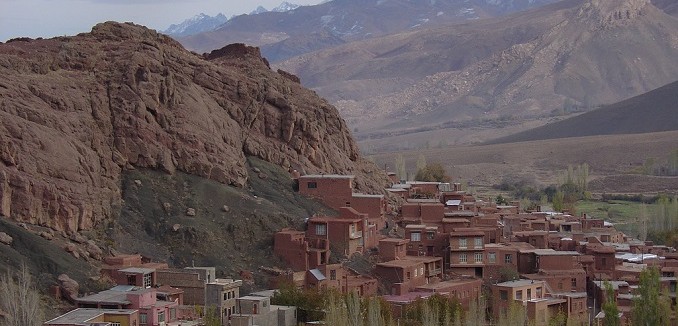Iran issued a effusive denial today to allegations issued by a dissident group accusing the Islamic Republic of building another secret nuclear facility, this time in the mountains near Tehran.
The news, unvieled by the Mujahedeen-e-Khalq (MEK), was according to Foreign Ministry spokesman Abbas Araqchi “in no way true and is denied.”
The MEK is an anti-regime movement that was the first to publicize the existence of undeclared Iranian nuclear facilities at Natanz and Arak. The Natanz facility turned out to be a uranium centrifuge facility, while Iran’s Arak facility involves the production of heavy water and plutonium.
In a statement, the MEK said the new facility, near the town of Damavand, has been under construction for seven years:
Four satellite images purporting to show the site were attached to the statement. The group said it obtained information on the facility from unidentified people in the Islamic Revolutionary Guard Corps, the Ministry of Defense, the Atomic Energy Organization and the Joint Chiefs of Staff of the Armed Forces. There was no way to immediately verify the images independently… The site comprises four tunnels, two of which are about 550 meters (600 yards) long, the Mujahedeen said, and was built by engineering companies associated with the Defense Ministry and the Republican Guards.
Iranian officials are not the only ones dismissing the MEK’s claims:
But the images did not appear to constitute hard evidence to support the assertion that it was a planned nuclear facility… A Western diplomat accredited to the IAEA told Reuters: “I have heard nothing. My first suspicion is that it is like the 2010 revelation – a tunnel facility the Iranians are keeping quiet, but no known link to the nuclear program.”
Meanwhile, the P5+1 group of nuclear negotiators – the U.S., Russia, China, France, Britain, and Germany – will meet in Brussels on Tuesday to discuss Iran’s violations of its international nuclear obligations.
It will be the first time that the group has met since Iran elected Hassan Rouhani – a former nuclear negotiator – in presidential elections last month. While Rouhani has promised greater transparency with regard to Tehran’s nuclear program, U.S. Senator Joseph Lieberman – writing in the Wall Street Journal – is urging caution. As a nuclear negotiator, Rouhani used similar promises to, according to boastful statements he later made, lock in Iran’s nuclear program:
The risk with Mr. Rouhani, who takes office next month, is that the Iranians will adopt a smarter strategy that accepts tactical compromises at the negotiating table, but only to buy the time and space necessary to push ahead with the most important elements of their nuclear program.
This is precisely what Mr. Rouhani himself boasted in a 2004 speech that he had done as Iran’s nuclear negotiator: suspending enrichment as a sop to the international community, even as Iran moved forward on other fronts. “While we were talking with the Europeans in Tehran, we were installing equipment in parts of the [uranium conversion] facility in Isfahan,” he said in the speech in Iran. “In fact, by creating a calm environment, we were able to complete the work in Isfahan”…
I hope that President-elect Rouhani delivers the change in priorities that the Iranian people voted for. But in light of the undemocratic and extremist character of Iran’s regime, and its past patterns of behavior, we must also prepare for the worst case—that Tehran under Mr. Rouhani will become an even more devious and dangerous adversary.




